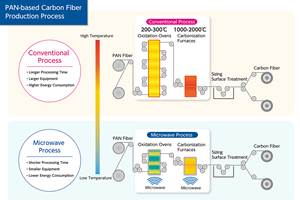North American Windpower reports U.S. offshore wind is "embryonic no more"
Plus wind news highlights show that offshore installations worldwide are picking up speed.
North American Windpower reports that the U.S. offshore wind industry is embryonic no more. Recent offshore wind news highlights also show that installations worldwide are picking up speed.
As of the end of July, the developer behind the 468 MW Cape Wind project had secured close to two-thirds of the roughly $2.5 billion needed for the wind farm, to be located off the coast of Cape Cod, Mass. In addition, the developer sold more than 77 percent of the projected output (363 MW) through stable, 15-year power purchase agreements (PPAs) at $0.187/kWh plus inflation. Construction is planned to commence in 2015.
Deepwater Wind (Providence, R.I.) has secured the entire output for the more modest 30 MW Block Island wind farm, located off the Rhode Island coast, with a 15-year PPA at $0.244/kWh. It also has preliminary contracts for turbines from Alstom and an installation vessel from Fred Olsen Windcarrier, and has received the go-ahead from the U.S. Army Corps of Engineers, the last federal agency to grant its approval. Deepwater says the Block Island wind farm has now been completely reviewed and approved by nine state and federal agencies, and expects “steel in the water” by 2015 with service to begin in 2016.
This year also saw the U.S. Department of Energy’s (DOE) offshore wind demonstration projects secure substantial funding. Fisherman’s Energy landed two grants of $6.7 million for final engineering and $40 million for construction of a 25 MW wind plant off Atlantic City, N.J. - although the project is mired in a dispute with the New Jersey Board of Public Utilities, which administers an important offshore wind renewable energy credit program that may be necessary to obtain financing for construction of the project. Dominion Virginia Power secured a similar rate of $46.7 million for two 6 MW turbines to be installed off Virginia Beach, Va., on novel twisted jacket foundations derived from the offshore oil industry.
Another unusual project, proposed by Principle Power (Seattle, Wash., USA) and selected for $46.7 million in DOE grants, is slated to have five 6 MW direct-drive turbines on semi-submersible floating foundations assembled near shore and towed to depths of around 1,000 ft/305m off the Oregon coast. The company’s previous partnership with big Portuguese developer EDP saw a 2 MW Vestas turbine successfully deployed off Portugal’s coast on a floating platform, not long before a major storm brought waves over 60 ft/18m high. The turbine survived, demonstrating that the deepwater development has a real chance at success and that the U.S. West Coast, with its much deeper sea floor, could also accommodate offshore wind.
The pipeline potential being built up through offshore lease signings through a program administered by the federal Bureau of Ocean Energy Management (BOEM) is also an exciting development. Further auctions for a total of nearly 10 GW of offshore wind capacity have been announced by BOEM for Massachusetts, New Jersey and New York in the coming year.
U.S. Wind Inc. wins Maryland offshore wind auction
Texas-based U.S. Wind Inc. is the provisional winner of the third competitive offshore wind lease auction by the BOEM for two parcels totaling nearly 80,000 acres offshore Maryland. The company, a subsidiary of Italian developer Renexia (Chieti, Italy), won with a bid of over $8.7 million for both Maryland lease areas which have the potential to support between 850 MW and 1.45 GW of commercial wind generation.
Each lease will have a preliminary term of one year, during which the lessee will submit a site assessment plan to BOEM for approval. The plan describes the activities (installation of meteorological towers and buoys) the lessee plans to perform for the assessment of the wind resources and ocean conditions of its commercial lease area.
If a site assessment plan is approved, BOEM says the lessee will then have up to four-and-a-half years in which to submit a construction and operations plan (COP) to the agency for approval. This plan provides detailed information for the construction and operation of a wind energy project on the lease. After BOEM receives a COP from a lessee, BOEM will conduct an environmental review of the proposed project.
UMaine receives $3.8 million federal offshore wind grant
The University of Maine (UMaine, Orono, Maine, USA)-led consortium behind the planned 12 MW Aqua Ventus offshore wind pilot project has finalized a $3.8 million research grant from the U.S. Department of Energy (DOE, Washington, D.C.).
Aqua Ventus was one of seven U.S. offshore wind projects to receive $4 million in DOE funding in 2012, but the department did not choose the pilot as one of three projects to win a $47 million follow-up grant in May of this year. The DOE did, however, say it would issue UMaine a smaller cooperative research grant to continue the design and engineering work of the 6 MW VolturnUS floating turbine.
A 1:8 scale model of the VolturnUS with more than 50 sensors on board has been deployed for over a year off the coast of Castine, Maine. It was the first grid-connected offshore turbine in the Americas in June 2013, and brought together more than 30 organizations as part of the UMaine-led DeepCwind Consortium.
Siemens receives order for 67 wind turbines for Dudgeon offshore wind power plant
The Norwegian energy utilities Statoil (Stavanger, Norway) and Statkraft (Oslo, Norway) have ordered 67 Siemens direct-drive wind turbines rated at 6 megawatts (MW) each and equipped with a 154m/505-ft diameter rotor for the Dudgeon Offshore Wind Farm in the U.K., located 32 km/20 mi north of the city of Cromer in North Norfolk. The project is owned 70 percent by Statoil and 30 percent by Statkraft. With an overall capacity of 402 MW, it will provide clean power to more than 410,000 U.K. households.
DONG Energy and MHI Vestas Offshore Wind Energy sign deal for 32 turbines
DONG Energy (Fredericia, Denmark) will purchase 32 MHI Vestas Offshore Wind (Aarhus, Denmark) turbines rated at 8 MW for installation at the Burbo Bank Extension project in Liverpool Bay, 7 km/4 mi off the north-western coast of England. This is the first commercial order for the V164-8.0MW offshore wind turbine. Construction is expected to start in 2016. When completed, the wind farm will be able to power more than 230,000 British households.
Related Content
Composites end markets: Electronics (2024)
Increasingly, prototype and production-ready smart devices featuring thermoplastic composite cases and other components provide lightweight, optimized sustainable alternatives to metal.
Read MoreRecycling end-of-life composite parts: New methods, markets
From infrastructure solutions to consumer products, Polish recycler Anmet and Netherlands-based researchers are developing new methods for repurposing wind turbine blades and other composite parts.
Read MoreASCEND program update: Designing next-gen, high-rate auto and aerospace composites
GKN Aerospace, McLaren Automotive and U.K.-based partners share goals and progress aiming at high-rate, Industry 4.0-enabled, sustainable materials and processes.
Read MoreMicrowave heating for more sustainable carbon fiber
Skeptics say it won’t work — Osaka-based Microwave Chemical Co. says it already has — and continues to advance its simulation-based technology to slash energy use and emissions in manufacturing.
Read MoreRead Next
Plant tour: Daher Shap’in TechCenter and composites production plant, Saint-Aignan-de-Grandlieu, France
Co-located R&D and production advance OOA thermosets, thermoplastics, welding, recycling and digital technologies for faster processing and certification of lighter, more sustainable composites.
Read More“Structured air” TPS safeguards composite structures
Powered by an 85% air/15% pure polyimide aerogel, Blueshift’s novel material system protects structures during transient thermal events from -200°C to beyond 2400°C for rockets, battery boxes and more.
Read MoreVIDEO: High-volume processing for fiberglass components
Cannon Ergos, a company specializing in high-ton presses and equipment for composites fabrication and plastics processing, displayed automotive and industrial components at CAMX 2024.
Read More











.jpg;maxWidth=300;quality=90)












